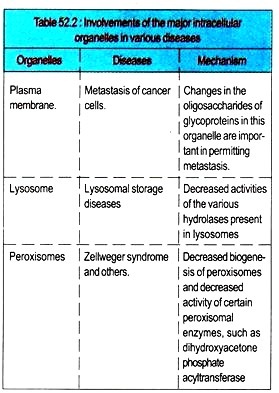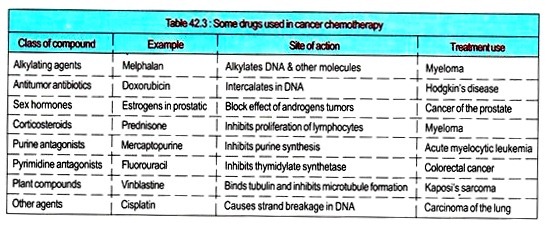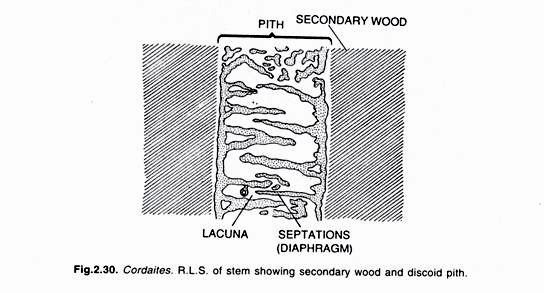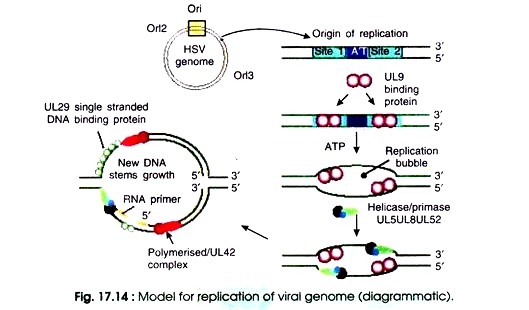Some of the most important role of reactive oxygen species (ROS) are as follows:
1. In BamH1 bio-processing:
In nature and natural systems oxygen and oxygen species do exist in free and combined states.
In nature’s biosphere four major natural systems of biochemical engineering and biotechnological importance’s include microbe, animal, plant and environment.
In all these systems oxygen play a key role. Depending on the nature and processing of the bio-system the participation of di-oxygen species such as free and dissolved molecular oxygen, (like O2,O2–, HOO– etc.) and mono-oxygen species (O, O–, OH–, OH) in bio-media is important.
Thus oxygenation, oxygen sensing and aero taxis phenomena bear a great relevance to oxyradical participation in biochemical engineering and process biotechnology. The concerns of oxygenation in microbial bioprocessing are well known. Speculated mechanism of participation of oxygen free radical species in prokaryotic systemic product formation had been proposed in an earlier publication.
Further advances of oxygenation property in Bam H1 producing system has been proposed in terms of metabolic oxygen concentration coefficient (MOCC). Thus it has been possible to suggest that oxygen or free oxy-radicals produced from it can directly or indirectly affect prokaryotic cells in two pathways in vivo regulation of Bam H1 biosynthesis.
In some microbial cell cultivation systems cells adhere on the surface of air bubbles. From the current knowledge of oxygen effects on simple organisms it has been clear that prokaryotes are much more metabolically malleable than eukaryotes. Also, present state of knowledge on the beneficial effects of oxygen in energy conservation and the detrimental effects of oxygen under oxidative/oxygen stress clearly indicated that microbial cells have evolved and redesigned/ modified regulatory networks.
It also appeared that cells did develop in respiratory system a mechanism for sensing oxygen concentration in their environment. Important scientific progress on oxygen sensing in living being has discussed how sensing based oxidative stress regulation manifest at the molecular level.
In bacteria aero taxis has been defined as the movement of a cell or organism toward or away from oxygen/air bubble. Accumulation of cells near air bubbles or other sources of oxygen was observed. Also, oxygen is known for a long time the only substance functioning either as an attractant or repellant in cells like E. coli and S. typhimurium.
In order to explain this behaviour a signal transducer gene dubbed aer has been identified and described for aerotaxis in E. coli. Aer protein promise to provide a definitive answer to the long standing puzzle to how cells detect oxygen gradients during aero taxis.
Proposed steps and nature of aer in the research methodology included the following:
a. Examining sequence features of the aer locus.
b. Construction of an aer mutant
c. Air bubble assays for aero taxis
d. Swarm plate assay for aero taxis
e. Aer is probably a flavoprotein
f. Aer may function as a redox sensor.
Also, two major redox systems are involved in maintaining reduced environment in the E. coli cytosol; the glutathione – glutaredoxin (GSH/GrX) systems in thioredoxin system which may be involved in controlling defense against oxidative stress.
Oxygen being the most important oxidant in the biosphere knowledge of oxygenation and oxygen sensing and aero taxis indicate that in cell cultivation in bioreactors during the course of aerobic respiration, molecular oxygen is generally reduced by four electrons to give water.
A part is reduced to highly reactive intermediate radicals like O2 (super oxide), OH (hydroxyl), H–, O2 etc. These partially reduced forms of oxygen, referred to as free radical or reactive oxygen species (ROS) are also produced, independently of respiration, during oxygen uptake reactions in the cytosol of the cells. During cultivation the production of ROS may increase proportionally with partial pressure of oxygen.
These unstable reactive compounds may mutate DNA; oxidize cell proteins and damage cell membranes specially in aged cells. In cell cultivation the damages may collectively be referred to as oxygen toxicity or oxidative stress. Thus relevance of oxyradicals in aeration, oxygenation, oxygen sensing and aero taxis is obvious in cell cultivation.
Over aeration for high oxygenation may reduce cellular activity or cause injury to cell culture and stem cell bioprocessing systems. Coping with active functional molecules in cells or tissues of bio-systems in presence of stress agents thereby developing its anti-injury capacity to certain extent may be termed as molecular adaptation. When the stress is by over aeration of oxygen its involvement in producing increased level of nascent oxygen radicals or active oxygen species formation may create stressful event which has been termed as oxidative stress.
Therefore, coping of functional molecules manifesting adaptive expression in cells or tissues allowing them to recover or survive in presence of oxygen or oxidative stress may be termed as molecular adaptation to oxidative stress (Fig. 5.24). In many cell culture systems this may be very important concern. Attempt has been made to provide a molecular mechanistic explanation of BamH1 production bio-system in relation to oxygenation based on experimental results and available information’s (Fig. 5.25).
2. Positive and negative regulation of Bam H1 production by 1O2:
In more recent years it was indicated that constitutive restriction enzyme, BamH1 protein biosynthesis in Bacillus amyloliquefaciens H1 strains is greatly influenced by oxygen tension in the cell cultivation liquid. The profiles of Bam H1 production showed that specific growth rate (p) and specific restriction enzyme protein yield (YRE/X) of this prokaryotic cell varied as a function of temperature and oxygenation.
It can be seen that the value of p varied largely, but YRE/X to only a little extent under thermal processing stress. The variations of these bioprocess technology states parameters by oxygenation and shear control parameter was seen to be very pronounced. It appeared that formation Bam HI involved oxygen species reactive stress gene(s) having functional optimality at specific oxygen tension. In prokaryotic system, oxidative stress has been found to induce that heat shock proteins and glucose regulated proteins.
This led the scientists to think that such cellular response in eukaryotic cells may be of great significance, since reactive oxygen species have been shown to play a significant role in a variety of disease processes like heat attack, stroke, arthritis and few others.
Reactive oxygen species have also been implicated in ischemic and reperfusion injury to a large variety of mammalian tissues. However, information on the prompt response of eukaryotic cells to the oxidative stress is scanty. Prompt molecular adaptation of vascular endothelial cells to oxidative stress.
In Bam H1 producing prokaryotic cells, the nature of the oxygen species reactive stress genes and corresponding stress factors in the cell is still not identified. Their identification and involvement in thermotolerence and oxygen stress in Bam H1 yield increase remains as a future research scope in the area of oxidative stress in prokaryotes. It may also be necessary to know in this organism whether the unknown individual HSPs are under the control of constitutive or inducible promoters.
Oxidative stress developed by exposing bacteria (Salmonella typhimurium) to low concentration of H2O2 induced several new proteins including HSPs and mRNA of catalase. In the process of oxidative stress adaptation, the bacteria become resistant to killing by otherwise lethal doses of H2O2 and other strong oxidants. Thus, it may appear in mammalian cells that oxidative stress induction creates a defense action against subsequent cellular injury by expressing a distinct group of proteins such as HSP and GRP, etc.
This class of special proteins has been collectively termed as “oxidative stress inducible proteins” (OSIPs). Furthermore, it was shown that among the oxidative stress inducible genes, Sox R-nd OxyR genes are positive regulatory genes for different proteins including catalase, hydroperoxide I, glutathione reductase, and alkyl- hydroperoxide reductase. However, many oxidative stress-inducible proteins are not characterized, and their functions are yet unknown.
3. Possible molecular mechanisms of oxidative stresses:
From the influence of dissolved oxygen on constitutive enzymic protein Bam H1 formation by Bacillus amyloliquefaciens H1 strain as well as prokaryotic systems like S. typhimurium and others under oxidative stress, it will be interesting and useful to know about molecular mechanism of participation of oxygen in such situations. The ambivalent mechanism of oxygen in aerobic organisms is really a paradox. A beneficial effect of oxygen in aerobic organism’s up-to a certain level has been observed. Above certain level non-beneficial effect was observed in many cases including Bam H1 production.
It leads to suggest that below certain level of (KLa < 260h-1) oxygen does not activate the regulon of mRNA of the activator protein to react with its SoxR binding site which is responsible for changing oxidation state. It permits in vivo Bam H1 synthesis to continue and increase. On the other hand, above certain dissolved oxygen level in other words volumetric oxygen transfer coefficient (KLa > 260h) it activates the SoxR binding site or the activator protein.
The SoxR protein is, therefore, directly activated by metabolic oxygen stimulus, an oxidant becoming transcriptional in activator by generating reactive oxygen species. It is generated from high d.o in the medium and interacts with SoxR changing oxidation state of its binding site. This change perhaps causes conformational change that effects the way in which the proteins interact with its corresponding promoters.
So, the SoxR regulon response to high dissolved oxygen stress is one of the few molecular mechanisms for which the translation of an environmental stress into transcriptional control has been defined and some cells were partly resistant to this response to survive harmful metabolic effects of active oxygen species and possibly other oxidants in the medium.
In prokaryotic bio-systems molecular oxygen may, therefore, play an ambivalent role. A substantial oxidative damage rate to DNA can occur as a part of normal metabolism of lipid peroxidation in cells. The oxidative DNA damage rate has been measured by thymidine glycol excretion in mammals. In order to cope with oxidative stress aerobic organisms evolved enzymic and non enzymic molecular level antioxidant defense mechanisms.
These molecular mechanisms within the organisms have been evolved to limit the levels of reactive oxidants and the damage they caused. In cells proliferation the molecular mechanism of oxygen stress dependent pathway has been shown to play significant role by regulating uridine phosphate mediated ribonucleotide reductase system.
4. Molecular mechanism types:
From various literature information’s and above discussions the manifestation of molecular mechanisms of oxidative stress possibly may be of six different types. Among these mechanisms for cell metabolism SOD has been stated to play a key role in molecular adaptation to oxidative stress in many bio-systems.
For molecular adaptation to prevent or minimize active oxygen species or radical formation a subtle balance is essential between superoxide flux, H2O2 generation and intracellular availability of suitable reduced ion. In this balance also SOD plays key role. SOD is found in all microorganisms including archae-bacteria.
Prokaryotic SODs may be iron and/or manganese SOD. MnSOD is usually found in presence of oxygen whereas FeSOD is found under anaerobiosis. In cell culture control dissolved oxygen (DO) or aeration efficiency (KLa) in the growth media is, therefore, one of the most common approaches for manipulating SOD in cells.
5. Adaptation and control of oxygen stress:
Depending on the treatment and/or presence of oxygen in cells or tissues of biosystems H2O2 generation vary to a great extent. In cells or tissues if nascent 1μ mol l-1 H2O2 comes in contact with 1μ mol l-1 of Fe it enhances OH radical generation by a second order gene reaction. Its kinetics having a second order
In response to the oxidative stress exerted by the presence of oxygen derived free radicals, cells or tissues take up (from the medium), produce and/or secrete antioxidant molecules. So under normal physiological conditions the toxic effects of free radicals are controlled by antioxidants like SOD, catalase, glutathione peroxidase, vitamin E, pyruvate etc. If stressful condition is severe having high oxygen or oxidant level to overwhelm the antioxidants cell injury or even inactivation by conformational change may result.
6. Can DO cause conformation change?
Cells generating H2O2 in presence of dissolved oxygen may influence on sites for SoxR or OxyR DNA interactions. The oxidation state of OxyR or SoxR regulon may become determinant in transcription enhancement. In turn protein is directly activated by metabolic stimulus, an oxidant to become transcriptional activator.
This activator serves both as a sensor of oxidative stress and the mediator of enhanced transcription of genes. The gene products are part of the adaptive response. In the adaptive response the active oxygen species is generated from dissolved oxygen in triplet di-oxygen state in the medium or from oxidant used in the medium. The reactive oxygen in turn interacts with the regulon altering its oxidation states.
Alteration of oxidation state has been stated to cause a conformational change affecting protein interactive target promoters. In Bacillus amyloliquefaciens HI strain there may exist systems involving coordinately regulated yet scattered genes which may be regulons. OxyR and SoxR regulons may presumably be functional.
The OxyR and/or SoxR regulon response to oxidative stress by disssolved oxygen (DO) and translation of environmental stress into transcription control is presumably manifested. Organisms use this response in part to adapt or survive the injurious metabolic effects of DO or other oxidants in the medium. This implies that DO may cause conformational change by oxidation-reduction state alteration of a molecule.
In these alterations operon consisting of regulons may be under negative or positive control depending on redox state. It can be referred to as inductive if the presence of some secondary effector like DO molecule is required to achieve an increased expression of structural genes. Likewise the same operon can be described as repressive if the effector DO molecule must bind to regulatory protein before it will inhibit transcription of the structural genes.
7. Can dissolved triplet dioxygen alter redox state?
It is known that DO has a triplet ground state 3∑O2g. This state having the following biradical electronic configuration indicates possibility of its electron O2 (πs)2 (*πs)2 (π2S)2 (σ2pz)2 (π2px)2 (π2px)2 (π2Py)2 (π*2Px)1 (π*2Py)1 (π*2Pz)° acceptability or possibility of its reduction.
For oxygen to be reduced to water four electrons and four protons need to participate as per following reaction:
O2 + 4H+ + 4e–———-> 2H2O (5.102)
In bio-systems it is known that electrons are transferred from substrates to oxygen. However other alternate reactions step pathways also does exist. These are given in Fig. 5.25. In dissolving oxygen at atmospheric pressure in aqueous bio-media (pH 7.0 25°C) the step’s and redox potentials are known. The free energy changes from stepwise reduction of 1 mole of O2 to two moles of water via nascent H2O2 has been related as a function of number of electron transfer as shown in the Fig. 5.26 below.
It showed that dissolved oxygen is a strong oxidizing agent with a total free energy change of – 74.7 kcal mole-1 (-312 KJ mol-1) for complete reduction to water. It can be noted from Fig. 5.26 that addition of the first electron to O2 in the triplet ground state is an unfavourable uphill limiting step. This is obvious from the shown low potential of -0.33 V. All other subsequent steps as shown in the Fig. 5.26 being downhill has no thermodynamic barrier.
However, to overcome the thermodynamic barrier to the first step the ridge between activation of dioxygen by regulon protein substrate and its own destabilization is very essential. The oxidation-reduction potentials of the reactive oxygen species given in Fig. 5.26 are for the oxyradicals in aqueous solution. The values may be modified when the species are bound to regulon protein molecule as well as when condition varies.
It is apparent, therefore, that triplet state dissolved dioxygen can alter oxidation-reduction state or conformation of a biomolecule depending on how much tolerance or affinity the molecule has towards oxygen. The values of oxygen transfer, adaptation and stress in relation to Bam HI productivity is given in Fig.5.25. It indicates that Bam HI production may be divided into two regimes with respect to oxygenation.
The first regime of inductive adaptation (positive regulation) causing increase in Bam H1 productivity and p reaching to a maxima in relation to oxygen tolerance. The second regime of oxygen stress (at high KLa > 260 h-1) resulting decrease in Bam H1 productivity, rx as well as p (negative regulations).
The observed attainable maximum equilibrium DO level in the culture liquid showed however a continuo’s increase with increase in KLa. From these results the functional relation between normal, partially adapted, reversible cellular injury or conformational change possibility in cells by oxygen stress in terms of productivity may be depicted as in Fig 5.25.
8. Index of molecular adaptation to oxygen stress:
In Bam HI producing cell culture molecular adaptation to oxygen stress may be assessed by the metabolic oxygen control coefficient (MOCC). The MOCC may be defined as the product of the ratio of p per unit OUR (rx) to that of the ratio of product concentration per unit aeration efficiency (KLa). Quantitatively,
9. Estimation of MOCC:
This index is easily determinable from a simple batch or continuous steady state culture run by following either time profile or steady state values and computing from equation (5.103).
10. Significance of MOCC:
As MOCC indicates the adaptive formation of a metabolite in relation to oxygenation if MOCC > 1, higher is the molecular adaptation to oxygen. If on the other hand MOCC < 1 indicates stress is high and molecular adaptation to O2 is poor.





